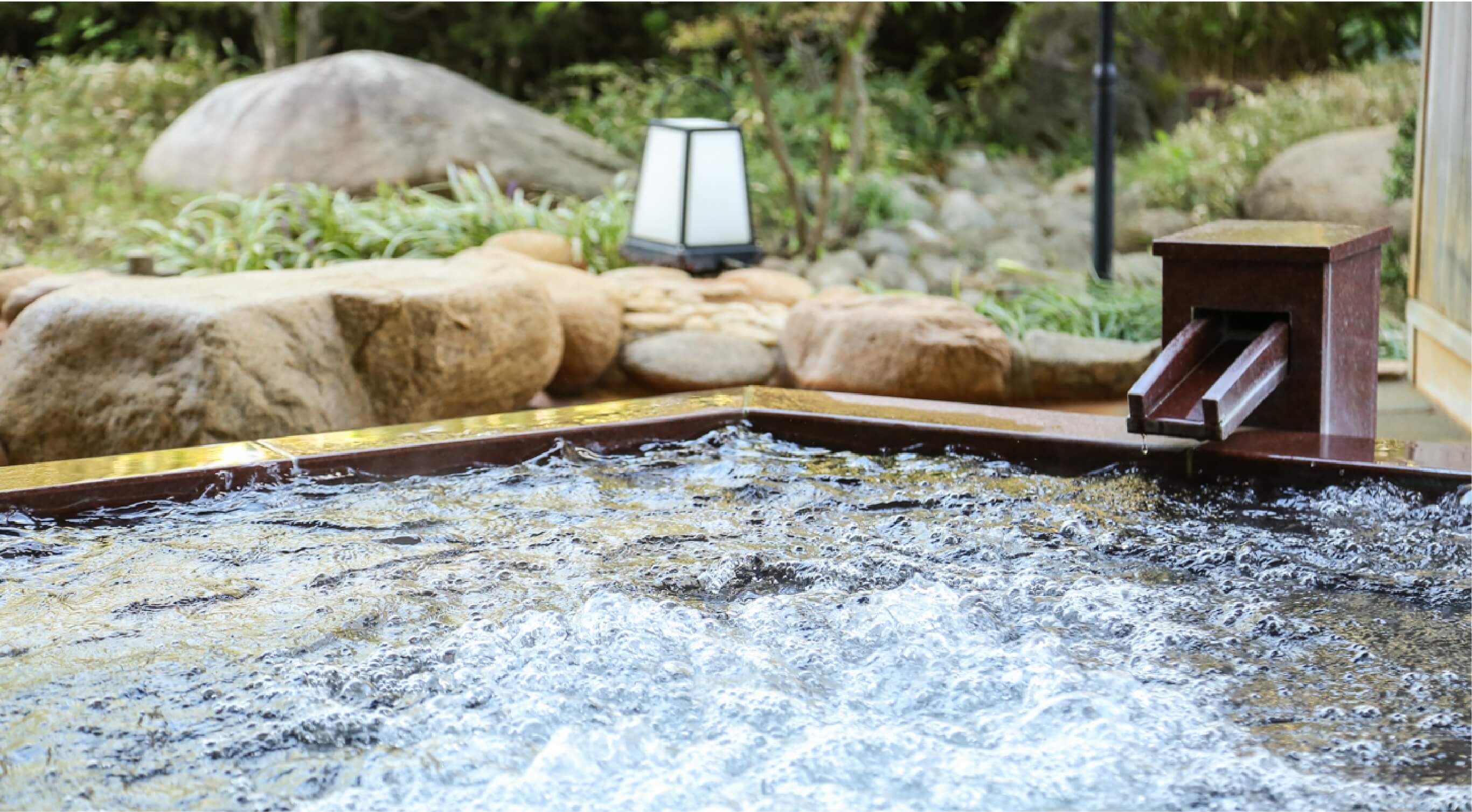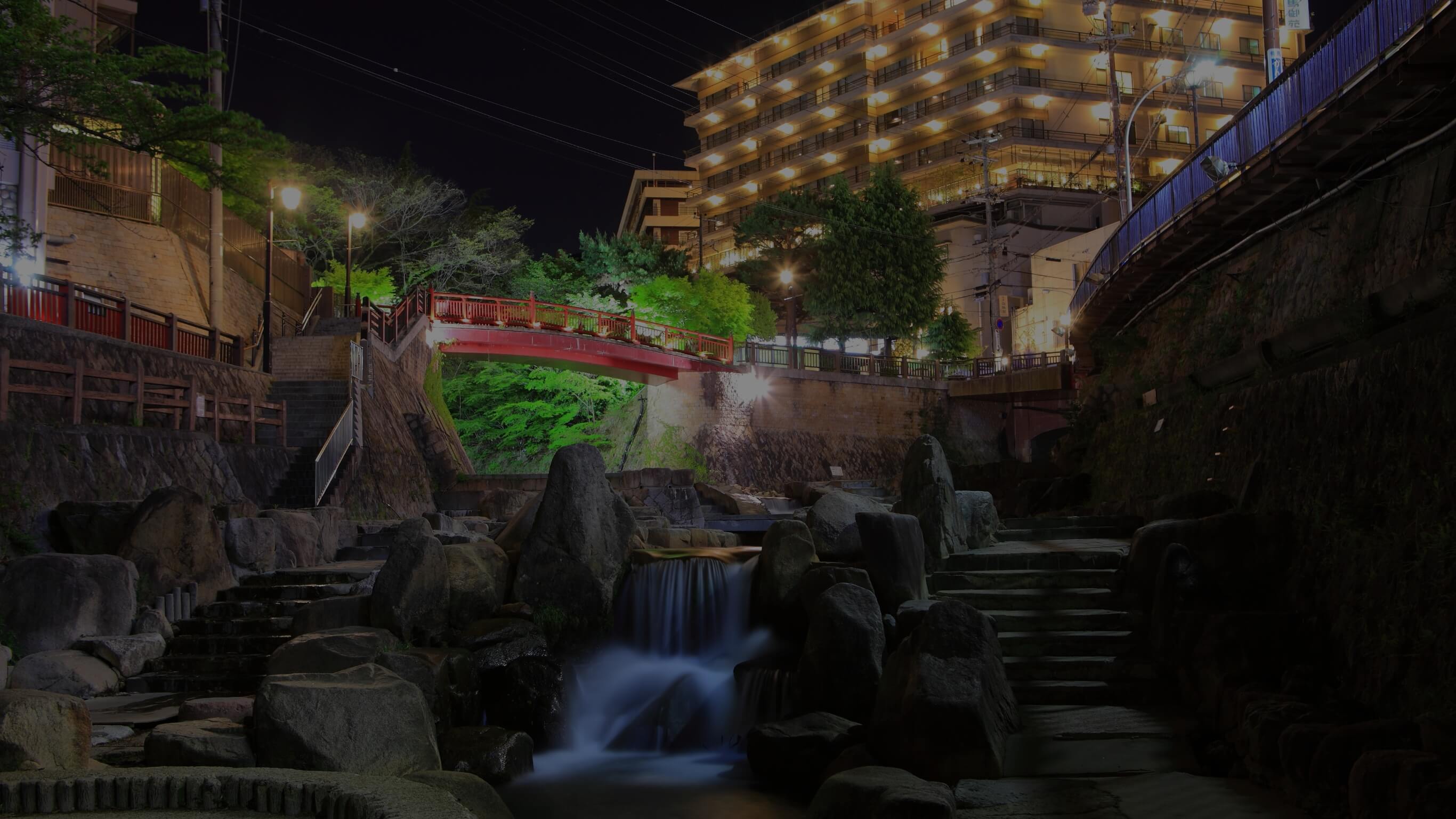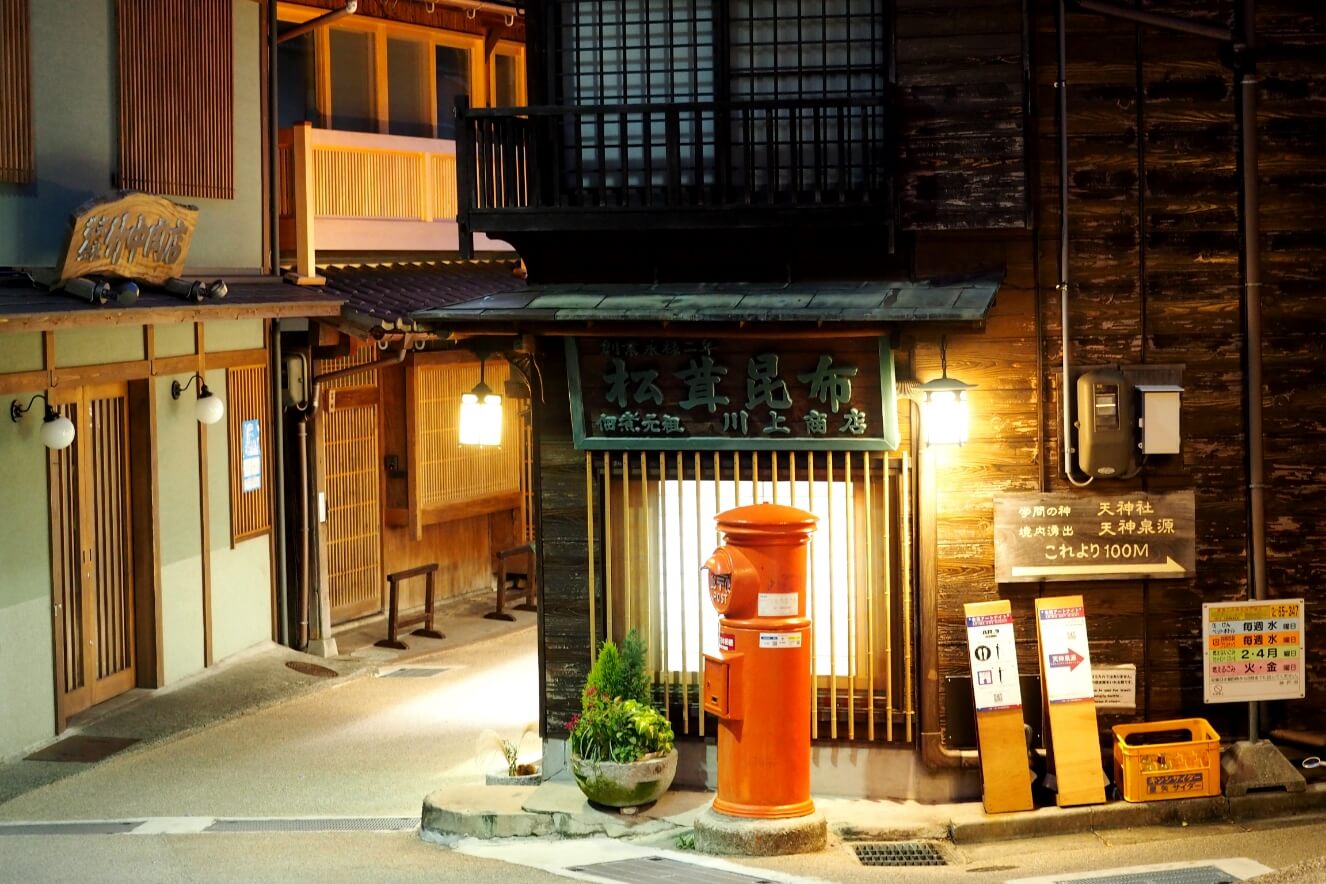Arima Onsen: The Western Retreat Loved by Hideyoshi
Overview of Arima Onsen
Arima Onsen, one of Japan's oldest hot springs, is located in Kita-ku, Kobe, Hyogo Prefecture. Nestled at the foot of the Rokko Mountains in a valley, it offers a serene escape from the urban hustle and bustle. Known as "Kansai's hidden retreat," it has been cherished by many for its unique geography and tranquil atmosphere.
Arima Onsen, celebrated for its rich history and therapeutic waters, is a prime destination for those seeking relaxation and cultural experiences. With convenient access from major cities and a variety of day-use options, it continues to be a beloved retreat for many visitors.

Geography & Nature
The onsen town spreads across a mountain valley called Koyo-dani, surrounded by hills. The name "Arima" originally meant "between mountains," reflecting its location. Although not far from downtown Kobe, the natural setting provides a feeling of seclusion and peace.
History
Arima Onsen, one of Japan's three oldest hot springs, has been cherished since ancient times. It appears in historical texts like the Nihon Shoki and The Pillow Book. During the Edo period, hot springs were ranked in a sumo-inspired hierarchy, with Arima Onsen earning the highest rank of "West Yokozuna." Notable figures such as Ashikaga Yoshimitsu and Toyotomi Hideyoshi, and later, the writer Junichiro Tanizaki, were known to visit. Hideyoshi, in particular, was fond of Arima Onsen and worked extensively to restore it after natural disasters, leaving many stories and landmarks related to him.
Discovery
According to the legend of Yuzen Shrine, the guardian deity of Arima Onsen, the hot springs were discovered by two gods, Oonamuchi no Mikoto and Sukunahikona no Mikoto. They found three injured crows bathing in a puddle, which turned out to be a hot spring that healed the crows' wounds. These crows were allowed to stay in Arima, known as "Arima's Three Crows." The hot springs gained fame during the reigns of Emperors Jomei and Kotoku in the 7th century.
Revival by Gyoki
Despite its initial popularity, Arima Onsen declined over time. The monk Gyoki revived it during the Nara period, constructing ponds, ditches, and bridges. According to legend, Gyoki was inspired by a vision to restore Arima Onsen after helping a suffering man who transformed into a golden Buddha.
Restoration by Ninsai
In 1097, a massive flood devastated Arima Onsen. The monk Ninsai, guided by a divine vision, restored the hot springs. Ninsai's efforts led to the construction of Onsenji Temple and 12 inns, which marked the beginning of Arima's recovery.
Reconstruction by Hideyoshi
During the late 16th century, Toyotomi Hideyoshi undertook significant reconstruction efforts following natural disasters and fires that damaged Arima Onsen. His extensive renovations, including the construction of Yuyama Palace, ensured the onsen's continued prosperity. However, Hideyoshi did not live to see the completion of his projects.
Edo Period and Beyond
Arima Onsen flourished during the Edo period, becoming a shogunate-controlled territory. Although initially featuring a single communal bathhouse, the onsen expanded with more inns and facilities over time. Path markers were installed to guide visitors, reflecting the increased travel for pilgrimages and health retreats by commoners.

Hot spring Heaven
Public day use Hot Springs
There are two public hot springs available for day use: "Kin no Yu" and "Gin no Yu." Additionally, there is a free foot bath located next to "Kin no Yu."
Characteristics and Benefits of Hot Springs by Type
Kin no Yu (Golden Spring)
This iron- and salt-rich spring is beneficial for cold sensitivity, lower back pain, muscle and joint pain, and peripheral circulatory disorders. The salt forms a thin film on the skin, providing long-lasting moisture and a mild texture due to the high metasilicic acid content. It also has antibacterial properties and is effective for various skin conditions and injuries.
Gin no Yu (Silver Spring)
Rich in carbon dioxide, this spring improves blood flow by dilating capillaries and is effective for hypertension, peripheral artery occlusive diseases, and functional arterial circulation disorders. Drinking the water can stimulate gastric juice secretion and appetite. The radon content enhances natural healing abilities and is suitable for various chronic and inflammatory conditions.
Day Use Hot Springs
Several hotels and ryokan in Arima Onsen offer day-use access to their hot spring facilities. Here are some notable ones:
-
Arima Grand Hotel: Offers day-use plans that include access to their luxurious hot spring baths. You can enjoy a relaxing soak in their various baths without needing to stay overnight.
-
Taketoritei Maruyama: Provides day-use options for their hot springs, allowing visitors to experience their serene and private bath facilities.
-
Hyoe Koyokaku: This well-known ryokan offers day-use packages for their hot springs, where you can enjoy the therapeutic waters and beautiful surroundings.
-
Kinzan: Offers day-use access to their luxurious onsen facilities, including both indoor and outdoor baths.
-
Arima Onsen Gekkoen: Provides day-use plans that give access to their hot spring baths, allowing visitors to experience their renowned waters and tranquil environment.
-
Nakanobo Zuien: Known for its elegant baths, Nakanobo Zuien offers day-use options so you can enjoy their hot springs without staying overnight.
-
Arima View Hotel Urara: This hotel offers day-use plans that include access to their extensive hot spring facilities, including a variety of different baths.
-
Arima Rokusai: Provides day-use access to their hot spring baths, allowing visitors to enjoy their high-quality onsen waters and facilities.
These facilities offer a range of options for day visitors, allowing you to enjoy the famous hot springs of Arima Onsen without the need to stay overnight.
Notable Hot Spring Hotels
-
Arima Royal Hotel
- Conveniently located in the center of the onsen town, next to temples like Onsen-ji and Nembutsu-ji.
- Offers a variety of meal plans featuring Kobe beef.
-
Kame no I Hotel Arima
- Known for its "Golden Spring" sourced from Atagoyama.
- Offers lavish onsen experiences with Kobe beef meals.
-
Koizumi Kaku
- Features private springs and Kyoto-style kaiseki cuisine.
-
Goshobo
- An 800-year-old traditional inn offering a rustic dining experience.
-
Arima Gyoen
- Provides direct access to both "Golden" and "Silver" springs.
- Specializes in Kobe beef dishes and offers day-trip plans.
-
Taiko no Yu
- A large hot spring facility with 26 types of baths, including gold, silver, and carbonated springs.
Attractions
Arima Onsen is rich in historical and cultural sites, including:
- Arima Toy Museum: Exhibits toys from various periods and cultures.
- Rokko Arima Ropeway: Offers scenic views of the area.
- Kin no Yu and Gin no Yu: Public bathhouses featuring the famous gold and silver springs.
- Taiko Hideyoshi Historical Sites: Related to the historical figure Toyotomi Hideyoshi, including the Taiko's Bath Museum.

Access to Arima Onsen
Arima Onsen is easily accessible from central Kobe and Osaka, making it convenient for both overnight stays and day trips.
Public Transportation
By Bus
- From Kyoto: About 70 minutes via Arima Express Kyoto Line from JR Kyoto Station Karasuma Exit or Hankyu/Keihan Bus from Kyoto Station Hachijo Exit.
- From Osaka: Approximately 60 minutes by bus.
By Train
- From JR Osaka Station: About 1 hour via JR Kobe Line to Sannomiya, then Kobe Municipal Subway to Tanigami, and Kobe Electric Railway to Arima Onsen Station.
- From Hankyu/Hanshin Umeda Station: About 1 hour 20 minutes with a similar route.
- From Sannomiya Station: Approximately 30 minutes.
- From JR Himeji Station: About 1 hour 30 minutes.
By Shinkansen
- From Shin-Osaka Station: About 1 hour 10 minutes.
- From Shin-Kobe Station: 30 minutes by train or 45 minutes by express bus.
By Air
- From Kansai International Airport: Around 2 hours 10 minutes by train, 2 hours 30 minutes by train and bus, or 1 hour 50 minutes by airport bus.
- From Osaka International Airport: About 1 hour 30 minutes by train or 50 minutes by bus.
- From Kobe Airport: About 1 hour 10 minutes by train or 1 hour 20 minutes by train and bus.
find your next getaway
Kumamoto
2 adults